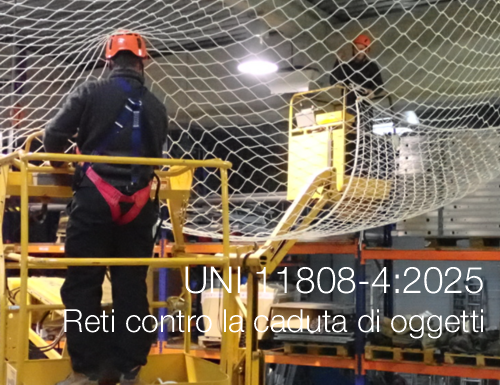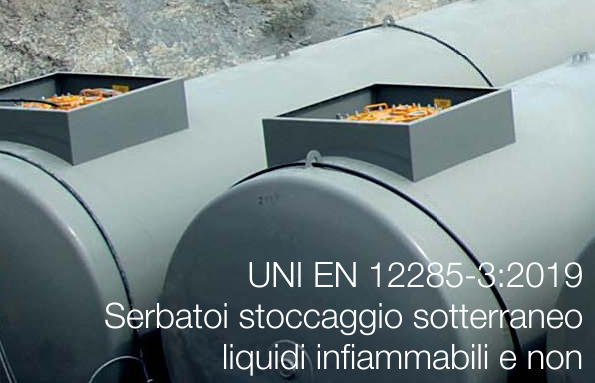Featured
UNI ISO/TR 7015:2024 - Applicazione ISO/TR 12295, ISO 11226, ISO 11228 e ISO/TR 23476 in edilizia civile

UNI ISO/TR 7015:2024 - Applicazione ISO/TR 12295, ISO 11226, ISO 11228 e ISO/TR 23476 in edilizia civile
ID 21122 | 11.01.2024 / Preview in allegato
UNI ISO/TR 7015:2024 Ergonomia - L'applicazione di ISO/TR 12295, ISO 11226, della serie ISO 11228 e di ISO/TR 23476 nel settore delle costruzioni (edilizia civile)
Il rapporto tecnico è destinato ad essere utilizzato insieme ai documenti ISO/TR 12295, ISO 11226, la serie ISO 11228 e ISO/TR 23476 nel settore delle costruzioni.
Il documento (sebbene gli esempi riportati si riferiscano solo al settore delle costruzioni civili) fornisce informazioni su come le norme esistenti possono essere utilizzate in un settore globale, come quello delle costruzioni.
Laddove il sovraccarico biomeccanico è un aspetto rilevante, anche se con caratteristiche diverse, i disturbi muscoloscheletrici legati al lavoro (WMSD) sono comuni e sono necessarie azioni preventive specifiche.
Data entrata in vigore: 11 gennaio 2024
...
Foreword
Introduction
1 Scope
2 Normative references
3 Terms and definitions
4 General outline of work processes in an annual multi-task analysis in civil construction
4.1 General structure of a multi-task analysis
4.2 Study of tasks distribution over the year on groups of workers who are homogeneous in terms of risk exposure
5 First levels: pre-mapping of danger and discomfort through key questions and quick assessment
5.1 Foreword
5.2 The pre-mapping model
6 Analytical study of work processes in annual multi-task analysis: description of a typical working day for each month and quantitative task distribution over the year
6.1 General
6.2 Phase A – Description of a typical working day
6.3 Phase B – Estimation of total number of hours worked every month of the year
6.4 Phase C – Assignment of tasks to a homogeneous group (or individual worker) and calculation of proportional tasks duration in each individual month
7 Annual multi-task risk assessment of biomechanical overload for the upper limbs
7.1 General
7.2 Phase A – Analysis of each individual task using the OCRA checklist to calculate the intrinsic risk score and prepare the tasks basic risk evaluation for each crop
7.3 Phase B – Application of mathematical models and preliminary preparation of artificial working day representative of the whole year and of every month of the same year
8 Annual multi-task risk assessment for working postures
8.1 The meaning of postural tolerance
8.2 Analysing the tolerability of working postures for the spine when performing manual lifting tasks, and for the upper limbs when performing repetitive movements and manual lifting: specific International Stand
8.3 Analysing spinal working postures without manual load lifting and lower limb postures (primarily static)
8.4 The TACOS method: contents and criteria for back and lower limb posture analysis
8.5 Posture analysis of a multi-task job performed on a full-time or part-time basis with yearly job rotation
9 Annual multi-task risk assessment of manual material handling (MMH) and carrying
10 Annual multi-task risk assessment of pushing and pulling
11 Manual material carrying (MMC) risk assessment
12 Conclusions
Annex A Initial identification and preliminary assessment (pre-mapping) of potential risks: criteria and presentation of a specific simple tool that allows its application
A.1 Aim
A.2 General pre-mapping model for civil construction – A facilitated organizational analysis
A.3 Similarities and differences between pre-mapping ERGOCHECK for construction and the classic ERGOCHECK model
A.4 A comparison between the summary of final results for the various homogeneous groups – conclusions
Annex B Criteria and mathematical models for analysing exposure to biomechanical overload in multitask jobs featuring complex macro-cycles (e.g. weekly, monthly, annual turnover)
B.1 Introduction
B.2 Daily job rotation
B.3 Rotations over periods longer than a day: the macro cycle (e.g. weekly, monthly, yearly)
B.4 Conclusions
B.5 Examples of evaluating the final risk in exposure to biomechanical overload
Annex C Criteria to evaluate working postures of the spine and lower limbs using the TACOS strategy in daily or other macro-cycle multi-task analysis: brief presentation
C.1 Preface
C.2 Why a new approach is needed: TACOS method contents and criteria for back and lower limb posture analysis
C.3 Timed score for postures calculation methods in multi-task exposure scenarios
C.4 Conclusions
Bibliography
Allegati
|
Descrizione |
Lingua |
Dimensioni |
Downloads |
 |
|
EN |
1190 kB |
41 |



































